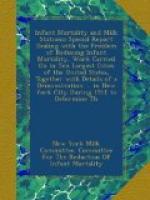|
This section contains 8,225 words (approx. 28 pages at 300 words per page) |

|
Mortality affects the volume of a population. Deaths are not equally distributed among all groups; rather many unique patterns have been identified. For example, the probability of dying is high among both extremes of a population's age structure—the very young and the very old. As a general pattern, the death rate is relatively high at age zero, reaches a minimum in the range from ages ten to fifteen, and then begins to increase gradually with increasing age. This increase becomes marked after age forty-five or fifty (Coale 1965).
Infant and child mortality are important because the largest mortality risk differentials between a society with high mortality and one with low mortality are always found within infancy and childhood. Because infant and child mortality are often related to general levels of health and living conditions, they are often thought of as measures by...
|
This section contains 8,225 words (approx. 28 pages at 300 words per page) |

|


